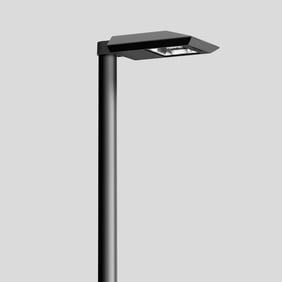Inner-city road

Here, the safety of all road users has top priority. The road must be easily recognisable and the road users must be visible. This is why the standard DIN EN 13 201 applies for the illumination of inner-city roads in order to guarantee road safety. As an example, let us use a carriageway with two lanes for traffic with a total width of 6 m (illumination class P3) and cycle paths and footpaths with a width of 2 m on both sides. Here, pole-top luminaires on 6 m high poles are used.
Their asymmetrical flat beam light distribution covers the entire road width of 10 m. Through the use of precision reflectors, the light is cast very uniformly onto the useful area. The luminaire spacing is 26 m. A reduction of the illumination level is recommended at night.
Lighting calculations Summary DIALux project


Luminaire spacing 26 m
The bird’s eye view clearly shows the light distribution on the road. The darkest place on the road between the luminaires has a degree of illuminance of 3 lx. The transition to this level, proceeding from the lightest point directly in front of the luminaire (15 lx), is very gentle and is felt to be pleasant. For the cycle path on the opposite side, these luminaires can still offer a degree of illuminance of 2 lx.
